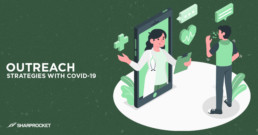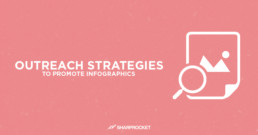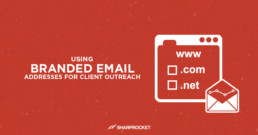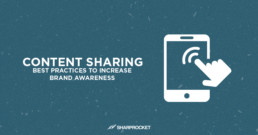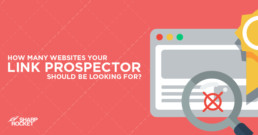How to Find Someone’s Email Address (In Seconds)
Today, I’m going to show you how to look for someone’s email address with supreme accuracy without spending minutes finding it.
Table of Contents
Step 1: Use Voila Norbert
Once you have an account, you can use it quickly. Landing on a website,
Voila Norbert is a free chrome extension tool that helps you find email addresses in seconds.
So install hunter to your chrome extension.
Once installed, it’ll appear in your Chrome toolbar.
So when you landed on a website, you click on it. And now you have to enter the prospect’s name and the domain of the website. Then click “Go ahead, Norbert”.
In as fast as 1 second, you’ll quickly see if there is an email attached to the domain.
You can best use Voila Norbert for single-author sites or blogs if you know the specific name of the person you’re reaching out to - which you can quickly see on the blog’s About page.
But for larger companies, you may want to contact a specific person like the content marketing manager or editor in charge of the blog.
Step 2: Try Hunter
Go to Hunter. Create an account.
When you landed on a website, you can quickly find email addresses associated with the domain by clicking Hunter tool in the toolbar.
Now, you’ll have a list of email addresses to choose from, depending on who you want to reach out to.
So let’s say for this website: siegemedia.com; I want to find the content manager.
And by clicking Hunter, it quickly shows me this person to reach out to for email outreach.
Step 3: Find it on About or Contact page
Not all email addresses are hosted in domains.
There are non-domain.com email addresses, such as Gmail accounts.
Here are ways to find these non-domain.com email addresses.
First is to check the website's About or Contact page.
Oftentimes, small blogs or websites will just leave their contact details there.
Step 4: Utilize site advanced search operator
Another way to find non-domain emails is by using a search operator: site:domain.com and then “gmail.com”
Google this exact search, then you’ll be able to see on the meta description in one of the pages in the search results - the exact gmail address.
Step 5: Search Twitter Feed on Google
Another email hunting approach is to first, find the Twitter handle of the author.
Then do a Google search for:
site:twitter.com/twitterhandle/status
And then some footprints like gmail.com or yahoo.com or hotmail.com or anything else.
There you’ll see the Gmail address included in one of the author’s tweets.
Start Email Hunting Today
So those are email hunting approaches that you can use to find email addresses in seconds.
The next thing you also want to do is to verify the email addresses you’ve collected.
For domain-email addresses, you get to see if the email address is verified when you use Hunter or Voila Norbert.
For non-domain email addresses, you may have to use email verification tools.
Email verification tools like Never Bounce and Verfiy Email Address.org are some recommended websites where you can verify your collected email addresses.
The #1 Question You Need to Ask Yourself When Doing Email Outreach
Why should they care?
This is the #1 question you need to ask yourself when crafting an outreach email. This is huge. And if you ask this question before you write your outreach template, you know that it'll significantly impact your response and conversion rates.
Most people would start with copying and pasting outreach templates they saw on Google. The thing is it the outreach copy doesn’t match first to what you offer, you’re missing the opportunity to highlight your offer and what it does to your target prospect.
Why should your prospects care? What is it in your content they have to pay attention to? Is it something they can distribute on their web properties like blogs or email lists wherein their audience can find value in it.
Highlight in your pitch the answers to this question “what’s in it for your backlink prospects?”
Content Gap Analysis in Guest Blogging
The first link building strategy is using content gap analysis in guest blogging.
Have you ever received this kind of email? People sending you a pitch for your blog without even having any specific topics. Or even if they sent you topics, they're mostly generic and not thinking of your audience.
This is what we want to avoid, right?
So the first step to pitch topic ideas that your prospects' audience actually need.
You can use Ahrefs, it's an SEO tool that has this Content Gap feature. So what it does is it helps you find keywords that you don't rank, but other websites are targeting and ranking.
So given we are using for guest blogging purposes, you want to look for keywords that your guest blog isn't ranking yet, but its competitors are ranking already.
So now once you pitch to that blog. You don't offer any generic topics. But rather list of topics brainstormed from keywords you know they have the tendency to rank.
And here's the good thing. The moment your topic was accepted, you submitted your guest content, and because it is targeted to a specific keyword, it now has the tendency to rank for its keyword. And once it ranks, your guest post gains more visibility. It gains more eyeballs from the blog's target audience. And given you have a link from the guest post, you can receive constant referral traffic.
How to Use Empathy in Outreach
What if you can generate more links by getting into the skin of your link prospects?
That's how empathy works, doesn't it?
If you can use empathy in your outreach, you'll increase your response and link conversion rates dramatically.
In this post, we'll cover actionable tips to integrate empathy in your outreach copies.
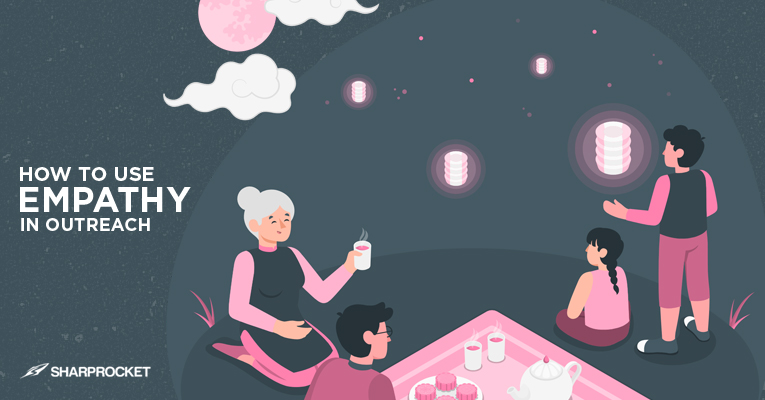

Empathy in its original context is "in the skin" — which we derived this common knowledge of "putting yourself in the person's place or shoes".
Table of Contents
How to Use Empathy in Outreach
The first tip to be more empathetic in outreach is:
1. Know what your audience's day looks like
If you're setting up an outreach campaign to a segmented audience (ethnos of people with the same interests, knowledge, or background), what you should be looking for are things that make them tick.
The way to do that is to understand their patterns of thinking and what they're going through like a normal person.
How can you know what a person's day looks like without having to face their experiences yourself?
The key is what I call, "a day in the life" hack.
The way to get started with this is to do a Google search for "a day in the life" + "audience".
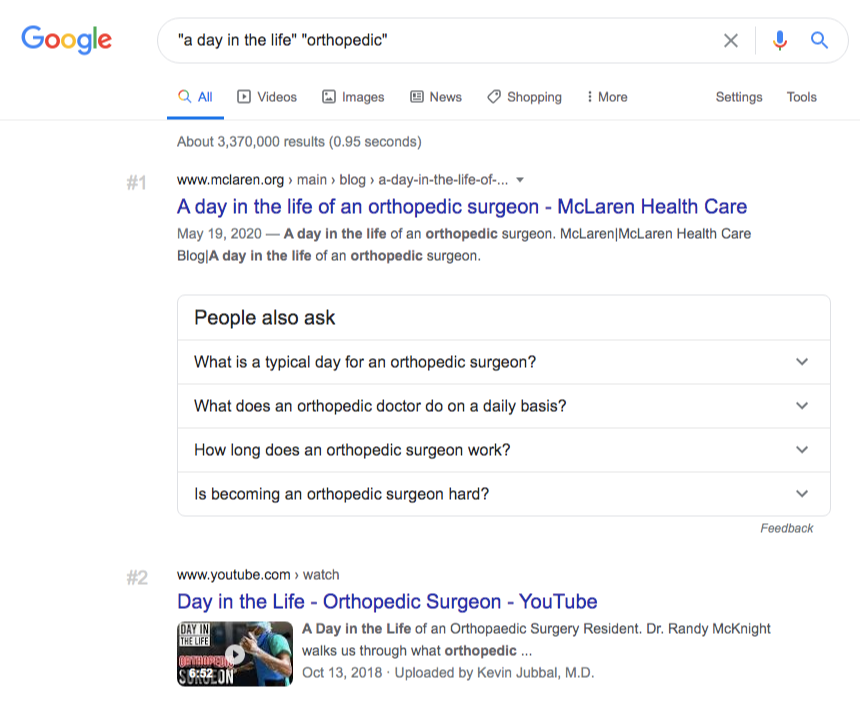

For example, you're promoting an infographic to a group of parent bloggers. You can replace the search query with "parents" to see what does parents' day looks like.
The less knowledgeable you are about a target group of people, the more effective this research hack is.
What if you'll pitch to web designers? How about chiropractors?
The list goes on and on.
So if you're an agency, you can literally utilize this "a day in the life" hack to know how your audience thinks and use it to craft a targeted email outreach with finesse.
Terminologies and lingos
When you do a research on the "day in the life" of "audience", you'll see different lingos and terminologies used by the person representing the group you're targeting.
Get insights from the different videos, essay-like blog posts, and other content formats as these are words you can directly insert in your email copies.
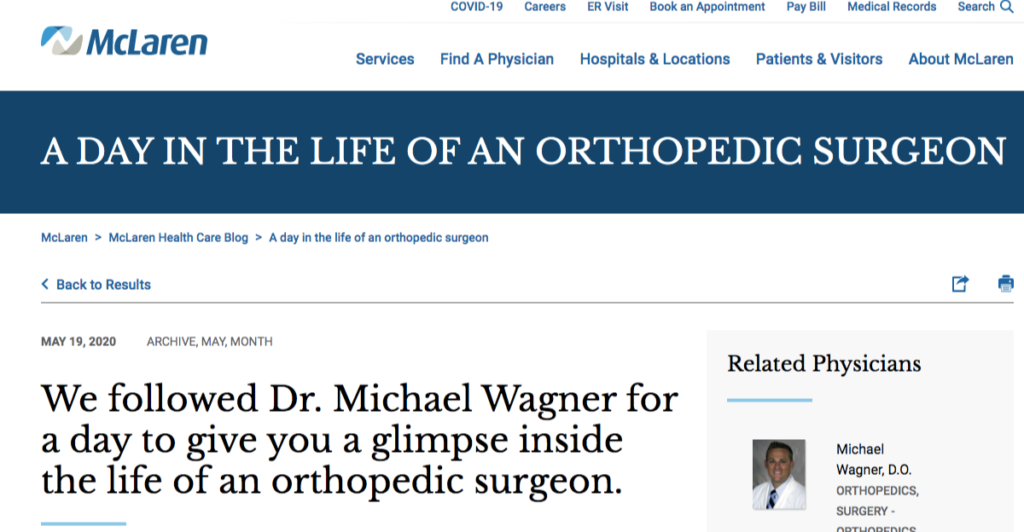

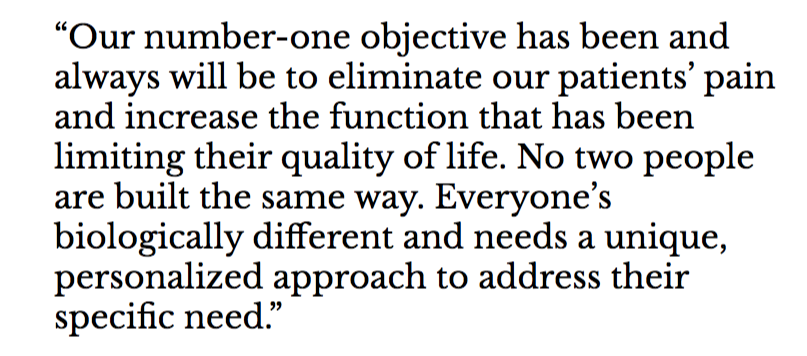

Content promotion lines
Many marketers throw lines like, "this content can you help you out…", "this useful content piece" or "interested in seeing this ultimate, great guide". — without even describing how the audience would resonate with the content.
Your initial pitch can stand out among all promoters of similar content to a group of an audience when you know how to describe your offer in a way that touches the person's day to day experiences.
2. Respect the prospect's time
Have you ever received multiple repeated follow-up emails within a few days?
How does it feel?
Chances are, even if you want to, you won't take the time to reply to the email anymore.
Follow-up emails should be done in a subtle and appropriate manner.
After no response, you should know how to send a follow-up email that is considerate to the person's time.
Not every silent response means the person doesn't care about your email. There are many various reasons why the person didn't take the time to respond to you — it could be their day job, or as simple as they had just overlooked it.
Putting empathy into consideration here.
Have a proper interval of follow-up emails to ensure you're not being overly aggressive, but at the same time, not missing out on the opportunity you couldn't get a link from the conversation, due to lack of follow-up.
Here's a good follow up email I sent to my leads that could be tweaked for link building outreach:
Hi [Name],
I haven’t heard back from you, and that tells me one of three things:
1) You’re not interested at this time, but we can work out something in the future.
2) You’re still interested, but haven’t had the time to get back to me yet.
3) You saw our content but you think it’s not fit to add to your page.
Please let me know which one it is, because I’m starting to worry. If you have other reasons, please let me know so I can stop bothering you.
Thanks and looking forward to hearing from you.
[Your Name]
3. Anticipate objections to solve problems beforehand
You can use sales psychology to determine what would be the possible objections of your link prospects, even before you actually pitch them.


By doing so, you're now looking for elements to add to your email copy that makes it irresistible.
There are three objections that a person can have whether that is an offer or a link request.
Vehicle, internal, and external objections.
Vehicle objections are types of objections a person has on the platform, tool, product, or offer.
Link building-wise, your offer is your content asset.
You have to identify common objections with your content asset.
Here are some examples:
- Exclusivity of your content. If you're doing digital PR, you want a few targeted local & national newspapers to cover your story or content before it actually goes out in public. If you could prove that your story is exclusively offered to them, you're likely to have a chance of getting the exposure.
- Ready to publish content asset. If you're distributing a blog post or an infographic to publishers, you would want to make it easily accessible or easy to find.
- Credibility of your content piece. If you've got early wins with media sites and top industry blogs, you could highlight it as part of your pitch — making your distributed content irresistible to be published on their blogs.
Internal objections are objections they have on themselves. This refers to their limiting beliefs that lead to not taking your favor.
External objections refer to any objections people have not using the vehicle (i.e. not using your content asset). This could be summarized as some sorts of "excuses".
What are the excuses potential linkers for not giving you links?
One example in broken link building outreach is the inability of a person to find the broken link.
In this case, to remove the roadblock of that objection, in your conversation leading to link placement, give the person details of broken links (URLs and their anchor texts).
I’m happy to send them over. The ones I encountered were here ([Linking From]):
- [Broken Link #1]
- [Broken Link #2]
- [Broken Link #3]
Hope that helps. Also, is there any chance I could make a quick suggestion? *CRAFT CUSTOM FROM HERE*
Knowing the objections of your potential linkers beforehand leads to increasing the success rates of your outreach campaign.
Here are more useful resources on this subject of email outreach:
- Outreach Strategies During the Coronavirus
- Why and How Influencer Outreach Works
- What To Consider When Using Branded Email Addresses For Client Outreach?
- How to Use VoilaNorbert For Linker Outreach
Skin in the Game
If you put your skin in the game, you literally get your hands dirty. You have to know who your link prospects are as well as their needs to be able to serve them properly.
Comment down below if you have any additional insights or tips you'd like to share with our audience.
Vetting Prospects At Scale
What if you can have a list of factors to look at when vetting link prospects?
In that case, you don't have to wonder whether a blog is worth reaching out to or not.
In today's blog post, let's cover these quantifiable and qualitative factors when vetting prospects at scale.


Before anything else, vetting backlink prospects on a manual approach is a good practice.
While you can use different tools to check the website's Moz DA, Ahrefs DR/PA, and other link-based metrics, using your eyes to assess websites' quality for links is still a major difference-maker in how your campaign works out.
For major enterprises (big brand link building campaigns), they typically have standards set up already.
As a link building agency that does link building at scale, we follow certain guidelines that align with their brand requirements as well as anchored to what we believe are quality metrics as a content-based link building company.
But for the majority of websites, people are stuck as to what factors to consider when vetting prospects either for guest blogging or resource page link building campaigns.
What you'll see in the list below are some mostly applicable for blog vetting, meaning you're looking for them as content partners. Some could practically be applied to other types of link development campaigns, such as broken link building and link reclamation.
Let's get started with the list.
Table of Contents
Considerable Factors When Vetting Prospects At Scale
1. Post Recency
This one is pretty basic. If the blog you're vetting hasn't posted in, like, three to six months, you're less likely to have a chance receiving a link, an email response — more so.
Simply look at the blog section of the site and see its posting date for recently published articles.
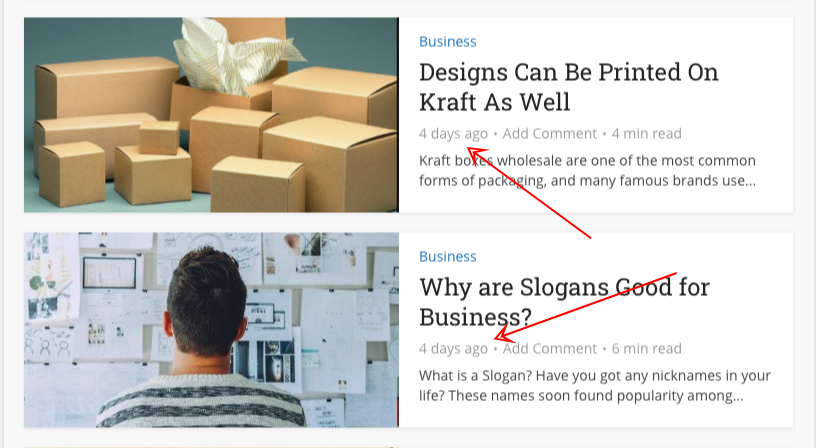
2. Brand Size
When doing link search campaigns, you get different sizes of websites. Mostly you'll get some really large brands.
Simply match it to what your brand can offer. Unless your content team has a solid comprehensive asset to offer to a huge brand, which in reality, has several editorial steps, you're less likely to acquire an editorial link.
Large brands have link development teams working on their own content. They would be willing to get a partner with your site for content partnership if you could offer high value well to them in terms of content assets.
3. Websites with traffic
A lot of SEOs and outreach teams rely too much on link-based metrics, without even checking the site's estimated organic traffic.
If the site has high traffic potential, you wouldn't just get a no-value link, but a contextual link with potential to drive referral traffic and assisted conversions to your blog.
You also want to look at the quality of the traffic and not just the numbers.
So, if you're building links for an eCommerce site that primarily targets the US, it's not natural to have tons of links from sites whose primary traffic region is India, Pakistan, Australia, instead of your own site's target region.
You can use Ahrefs to quickly check the % of traffic by country of your vetted website.
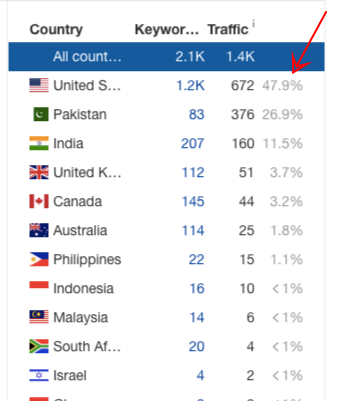
4. Without Major Traffic Drops
Websites with significant traffic drops can be as a result of an algorithmic or a manual penalty. While we can't figure out which of the two is the major reason, unless we have the data ourselves, it is best to avoid such sites to be on the safer side.
You can use SEMRush or Ahrefs to check the website's traffic, and simply look at if it has major traffic drop/s.
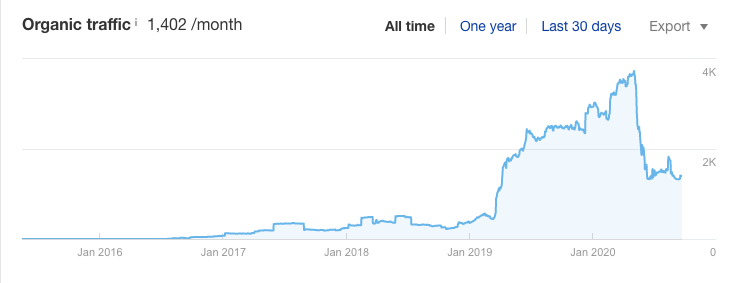
5. Types of External Referential Links
What you are looking at here is the site's external links — preferably those ones that they use to refer the reader to another resource or article for more details or information about the topic they cover.
Let's say, you are vetting blogs for content partnerships. You want to know if the blog is externally linking to other content sources (e.g. blogs). If the site is linking externally, but it's only to .gov sites, it won't necessarily be a good fit for your targeted link development campaign.
That's the other way around if you're pursuing resources pages for a broken link building campaign. Resource pages from a lot of these sites have some external links to .gov and .edu sites. This could still make sense for your brand if you're doing some kind of academic type of content.
If a blog has written for us or contributor's page, it is a clear sign they accept content contributors. That is a good or bad signal if you ask me. A good sign if you're taking guest posting campaign, as you would want to see if a blog accepts outside contributors.
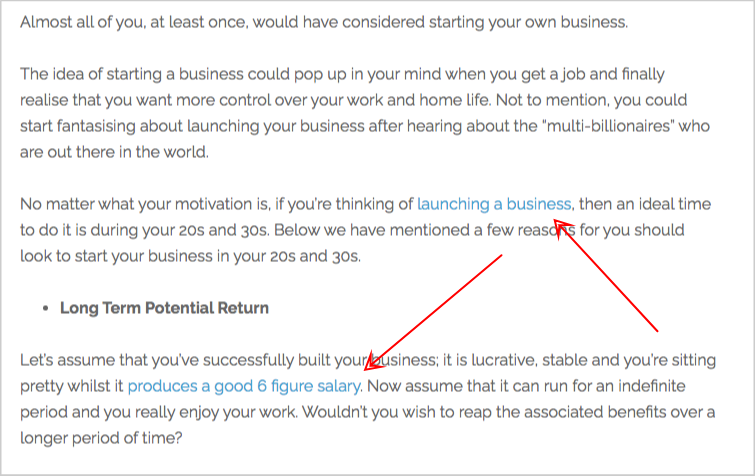

However, it's a negative sign if most of their blog posts are guest posts and there is not much original content of their own.
So, check how the blog's external linking practice to help you decide for yourself what would work as a good link prospect.
6. Irrelevant Content Partners
The dilemma for most link builders and SEOs trying to hit their number of links per month is they settle for sites that link to any irrelevant content partners (guest posts on entirely irrelevant topics).
Since they don't know how many websites they should be looking for and aren't capable enough to do the necessary analysis for vetting link prospects, they ended up having guest post links from completely different niche.
If you're vetting a niche site, but you spot many irrelevant posts from different niches, it's a clear negative sign you have to consider.
7. Site's Natural Link Acquisition
A highly valued vetted site is a site that could drive your referral traffic and potentially helps your brand to be more visible to other relevant linkers. This is the site's natural link acquisition capacity.
You basically want to know if the site is capable of attracting new links every now and then.
The best way to identify this site's specific ability is to use Ahrefs Site Explorer. Go to "Best by Links" under pages. Set the HTTP code as "200 ok" to only view live sites and sort the results by the number of referring domains.
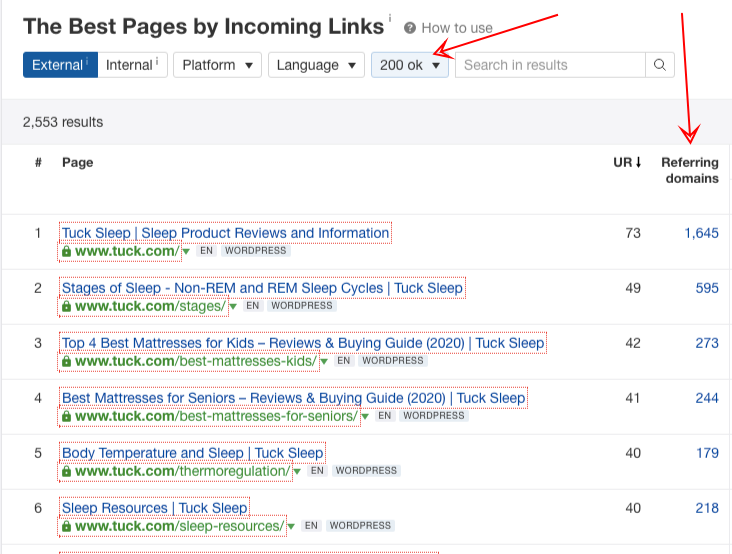

This gives you an idea that their pages are capable of acquiring natural links from relevant blogs. You can take a deeper look at their best page and see what type of link they acquired.
Of course, there isn't a guarantee that your site gets natural links too, but you're now vetting on a site that has the potential to have it on your end.
Given that high-value content published on other sites will likely pick up some links in the process, either internally (from other related pages) or externally (from other linking relevant sites), you get more visibility from your contributed content.
8. Basic Design and Branding Check
If you're qualifying link prospects at scale, you could easily see some patterns when checking for quality.
Part of that is the basic design and branding of the site. You only have to ask the question, does the site use a typical free WordPress theme or they have invested in good design and branding?
How's their design theme? Are they mostly using stock photos?
If you're doing an enterprise link building campaign, no questions asked if you have seen sites without impressive design. They don't have to be pretty clever in design but must be above average than most free designed blogs.
You can't judge easily a site's traffic potential based on its current design. See this website for an example. There's nothing astounding with the design, but they get so much traffic.
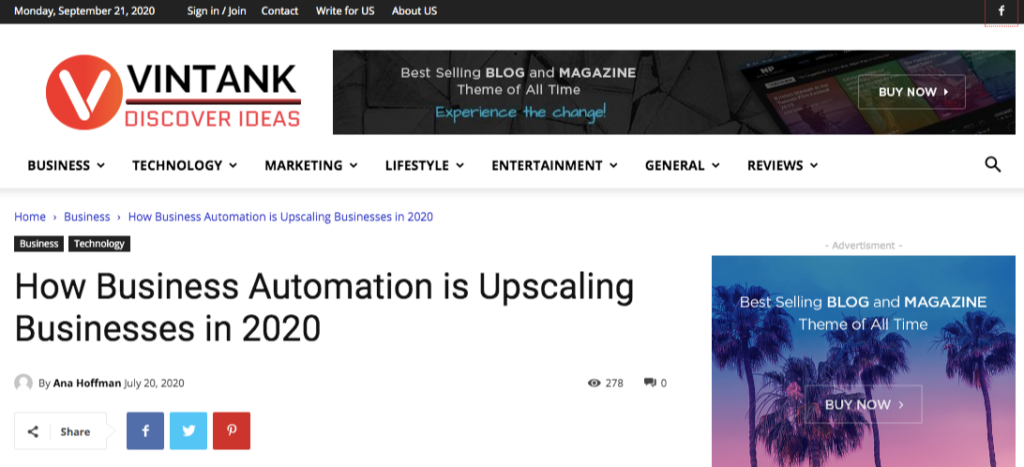

Nonetheless, as you master link qualification, you'll get a good feel of what makes a site good in quality simply by checking its design and branding.
9. Shady Outgoing Links
If you want to be more meticulous with your link qualification process, you can go to Ahrefs Site Explorer and head over to Linked Domains under Outgoing Links. Filter the results by "dofollow" and sort by "first seen".
You'll get a list of the most recent dofollowed linked domains from your vetted website.
Preferably, unless you're into these niches, you want to avoid sites that link to adult, gambling, pharma, and other questionable sites. No matter how good their link-based metrics are, you're going to get a problem getting links from them.
Experience Matters
It takes a lot of time and experience before you or your link builders could master the art of link qualification. As they involve themselves much in vetting sites at scale, they get to be more efficient in doing so, and thus, help your campaign reach more links in the results.
Outreach Strategies During the Coronavirus
COVID-19. This destructive virus has affected many businesses and individuals including SEOs and content marketers.
While we don't know when this will end, what we can do is to adjust our strategies based on the current situation.
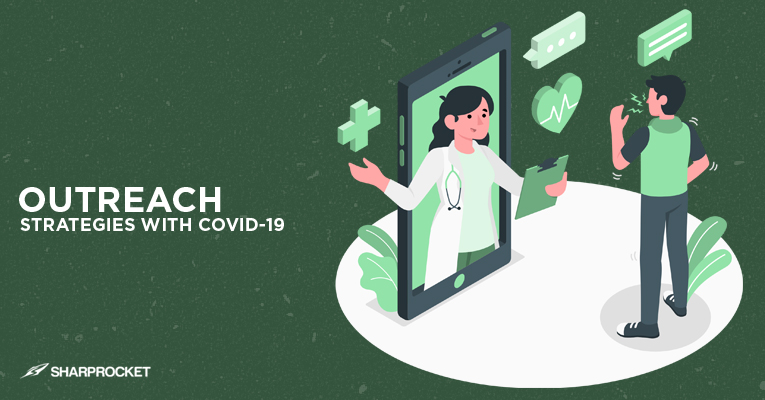

At SharpRocket, we launch different link building and content marketing campaigns and have seen the effects of COVID-19 on our link prospecting, outreach, and content creation initiatives.
Not all are major changes, but there are multiple elements that must be considered for links to go live for our clients during COVID-19.
Table of Contents
Outreach Strategies During the Coronavirus
1. Be Sensitive
You can't do the same old style of sending spam uncustomized emails to your link prospects.—even having a templated email copy without even checking how your message resonates with your audience.
In this period when people are in doubt, disappointed, and are looking for some relief in their lives, the best email outreach strategy is sensitivity.
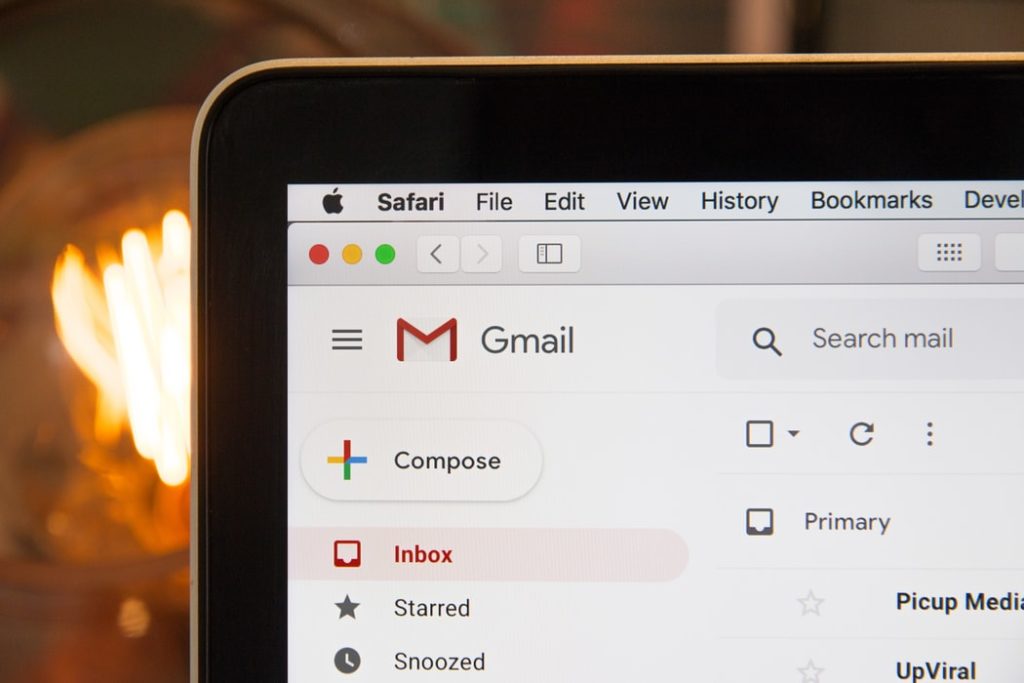

Sensitivity requires you to think about the person you're reaching out to. What is he or she going through as he or she opens or reads your email?
Show care to prospects by adding lines to your outreach templates that genuinely empathize about their situation.
Avoid writing an introduction with lines like, "I've read your blog post and I liked it..". This insensitive copy line won't make the cut.
Add some human elements when personalizing your outreach copies. Do you have any content pieces that resonate with the times and situations of your target audience?
By showing more of the benefits of your content to actually help people, you get to receive more positive responses to your outreach emails.
2. Avoid Prospects Hit Hard by COVID-19
There are industries where you will find outreach campaigns to still gain positive rates similar to the usual season.
You'll also find verticals that have been obviously hit hard by COVID-19, which results in lower response and link placement rates for publishers belonging to those industries.
Whether you're reaching out to promote your infographics for bloggers and influencers, it's wise to know if your outreach campaign is getting its optimal results.
It is best to avoid prospects in industries greatly affected by COVID-19. These include bloggers and publishers from weddings, travel, and hotel.
While you may still get responses from them, you won't receive much attention that you deserve compared to before.
Avoid any closed business when considering prospects. Go to their website or social media account and see if there's a note that mentions they're closed or might be closed for business.
3. Leverage Resource Page Opportunities
While there are so many negative things going around, one positive thing to take note is that most webmasters do now have time to work on their pages.
This means they can make any necessary fixes on their webpages as faster and as often as they could.
If you're running a link building campaign, particularly for resource page opportunities, you'll find that a lot of webmasters are more responsive than ever before.
If you're aiming for a couple of links through broken link building, you don't have to hesitate to reach out to webmasters and letting them know of your link requests.
Here are some guides that can help you walk through the process of broken link building:
- The No Non-Sense Guide to Broken Link Building
- A Detailed Guide to Resource Pages
- Broken Link Replacements for Better Link Conversion
4. Revisit Content Themes That Resonate With Your Prospects
There are content pieces that will have a breakthrough in today's time.
When you tap content themes related to current people's needs, you get to showcase what your brand is about and at the same time, addressing what your target audience cares at the moment.
Here are some content themes you can consider for your content creation campaign:
- social distancing
- cleanliness
- positivity
- remote work
- work and life balance
- parenting
Revisit your brand's content theme and see if there are any gaps you can fill in right now. You can use Ahrefs' Content Explorer or Buzzsumo to start looking for content topics that are related to your site.
5. Discover Data Stories To Match the Interests of Journalists
Data stories play very well for journalists, as it is based on real-life experiences that resonate well with publishers' audiences.
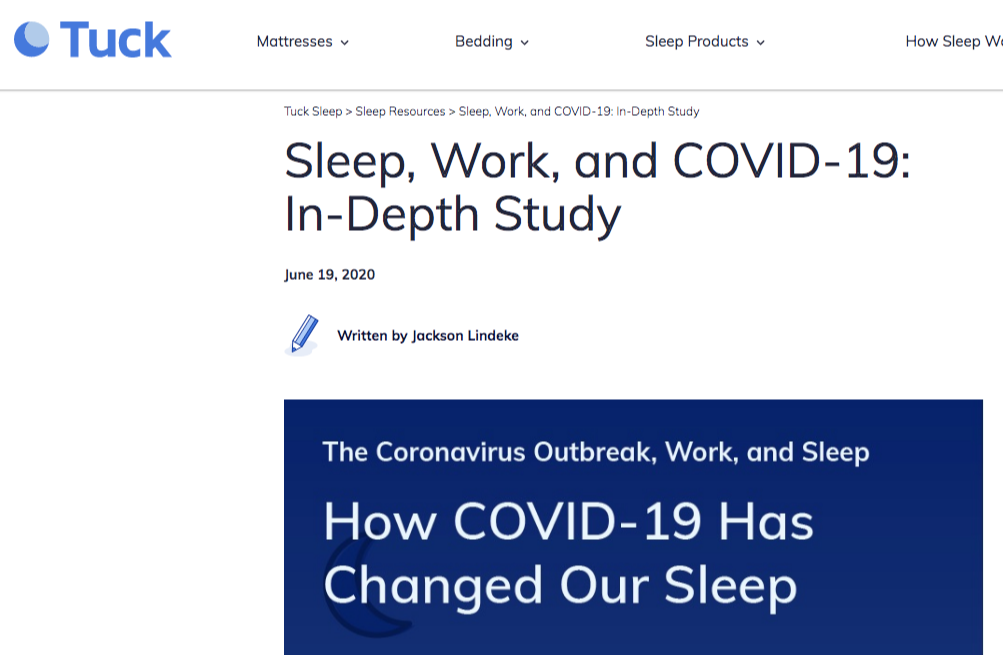

If you're in an industry where topics may play off of coronavirus, there are stories from customers you can still leverage as part of your pitch. Fields such as paper manufacturing can think of data stories about social distancing.
Stories aligned to content themes get good replies and coverage. While journalists are picking up ways to discover stories, use what you have from your customers' experiences, and see how you can pitch a value-driven data story to them.
TL;DR
While we don't know when this COVID-19 will end, we have to think of ways to leverage opportunities arising from the situation.
Check out brands in other industries with great content strategy. Understand how they're keeping up with the pace in terms of links. Assess the relationships between their pages and their linking pages. Get insights from their execution.
Outreach Strategies to Promote Infographics
When we think about outreach, we can't start without having a discussion about email templates.
Many content marketers, SEOs, and link builders will disagree with the use of email templates, as it would only appear not personalized to prospects they're reaching out to.
But the greatest link building minds actually use email templates to scale their link building outreach efforts.
In fact, without it, it wouldn't be possible to gain a consistent number of links for link building campaigns — whether that is for enterprise sites, niche blogs, or eCommerce sites.
Outreach templates are critically important to scale link building and to A/B test elements of email copies in order to increase positive results.
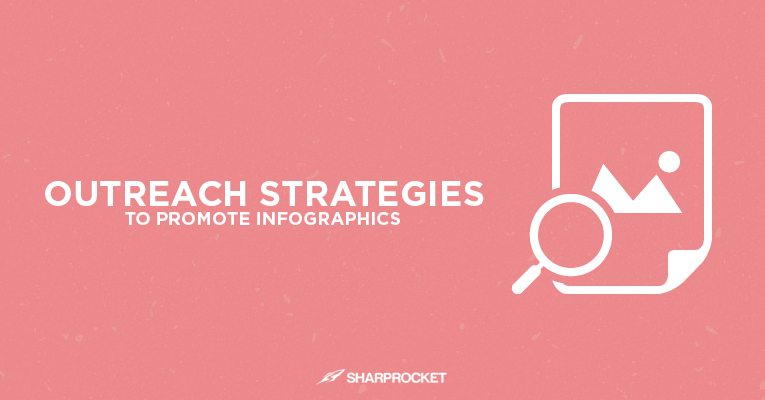

In this post, we're going to discuss a targeted outreach campaign — infographic outreach promotion.
Table of Contents
What Makes Infographics Valuable For Prospects?
Value proposition is important to identify at the start of an outreach campaign. This will serve as the foundational message of an email outreach copy.
Infographics are highly valuable it if covers a message that no one else in the market has brought yet.
Of course, there is no such as this as an original content piece. Most infographics are derived from freely available data sources.
But If you can come up with an infographic that's worth seeing in terms of content format, information, and messaging, you'll have a unique value proposition your prospects would love to share and link to from their webpages.
Let's cover some best practices to promote infographics to build high quality backlinks and get the deserved attention from the audience.
A. Write custom intros for publishers
One effective content promotion technique for infographics is to offer custom intros to potential publishers. This exact strategy is part of guestographics — guest posts for infographics.
Its advantage is helping out these content creators struggling to write the text part of the content piece — an added value besides giving them the infographic.
When writing custom intros of infographics, it's critically important to write for the audience of the hosted domain. Know and understand their audience.
Your infographics may be the same piece published to all interested sites and blogs. But its well-written custom intros is what's make the visual content more significant.
B. Break infographic into individual images
Infographics are normally long-form type of content.
In fact, there's a myth that the longer the infographics are, the more valuable it is. But this isn't true all the time.
In many cases, infographics that are too long must be cut into several pieces to be able to fit websites and blogs. This gives followers of the website real estate to consume the content effectively.
You can chop your infographic into individual images for each section, point, or takeaway.
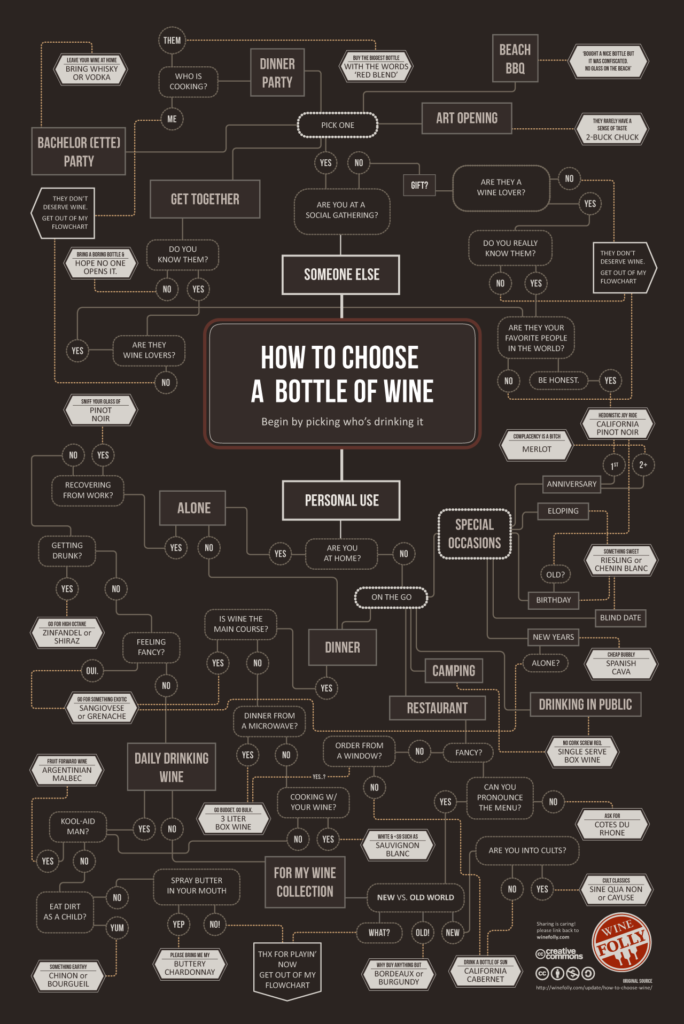

Instead of giving the entire infographic to your outreach prospect, you give them opportunities to use pieces of the visual. In that way, publishers can pick and choose images they think would be relevant for their future content works.
Once the infographic has been broken down into stand-alone images, you can create a gallery of these images — attaching it to your outreach emails like a little press pack.
Here are some examples of press packs from Distilled.
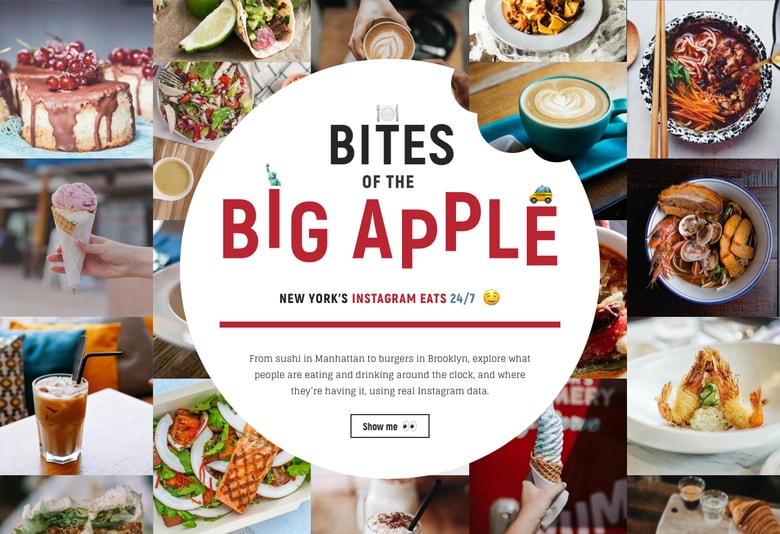



The same analogy of press packs can be applied to outreach in promoting infographics.
Whether you're reaching out to influencers or niche bloggers, you can attach a custom gallery of images as soon as they respond positively to your initial pitch.
Another method to present those images is to upload it on a third-party site and simply include a URL to your outreach email linking to the gallery of images.
C. Target different types of outreach prospects
Every content marketer promoting infographics wants to get the most number of links possible to its visual page — as to get more visibility and to distribute the messages effectively to its target audiences.
An effective outreach campaign starts actually with how well do you know your outreach prospects.
This involves targeting different types to expand your list and get the most out of the content promotion and link building.


Identify publishers who will be interested to publish your visual content. Start looking for some local angles of your infographic messages. It could also work well with the national press if you identify any fitting to your data.
Of course, you can't get away with your initial type of outreach prospects - niche bloggers and content publishers in your space.
Are there any news sites that can cover your visual content? Go and find any similar infographics and see who linked to their content piece. Often times, you'll find news sites you can reach out to for additional linking opportunities.
The idea of having different types of outreach prospects is to have your own split test. You can assess which types of sites respond better and double down your efforts for that particular segment group.
When you have many options for outreach prospects, you increase the likelihood of acquiring more links for your visual content piece.
You can use Ahrefs or Buzzsumo to find outreach prospects of site types I've mentioned earlier. And when finding email addresses, you can use VoliaNorbert to semi-automate the email finding process.
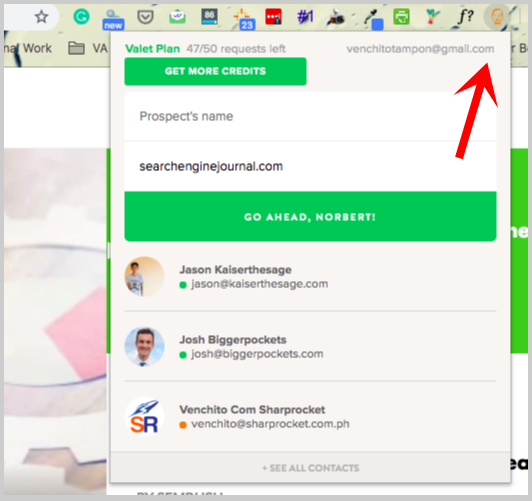

Organize your list of outreach prospects in a spreadsheet or in an outreach tool (Buzzstream, Pitchbox or NInjaOutreach)
Include necessary contact details and other pertinent information of link prospects that can help you personalize your email copies. This would make your outreach initiative much easier, as you have inputs in place for email templates.
Consider what type of email address you'll be using as a sender for your outreach emails. You can use your agency email address, or branded email addresses for your clients' outreach.
D. Use copywriting techniques for better engagement
Every outreach email has its own agenda — to get someone to take action. In this case, to publish the visual content piece your brand has created.
In making that happen, your outreach email must engage its target recipient from the start of the email down to your desired action.
This is where copywriting techniques come to play.
Gisele Navarro shared how to turn a boring email into an irresistible link pitch. In her post, she discussed this idea of using grease-slide copies.
You'll see most of these greasy slide statements in most of Brian Dean's articles at Backlinko. You may not be fully aware but you keep reading the entire post until its end.
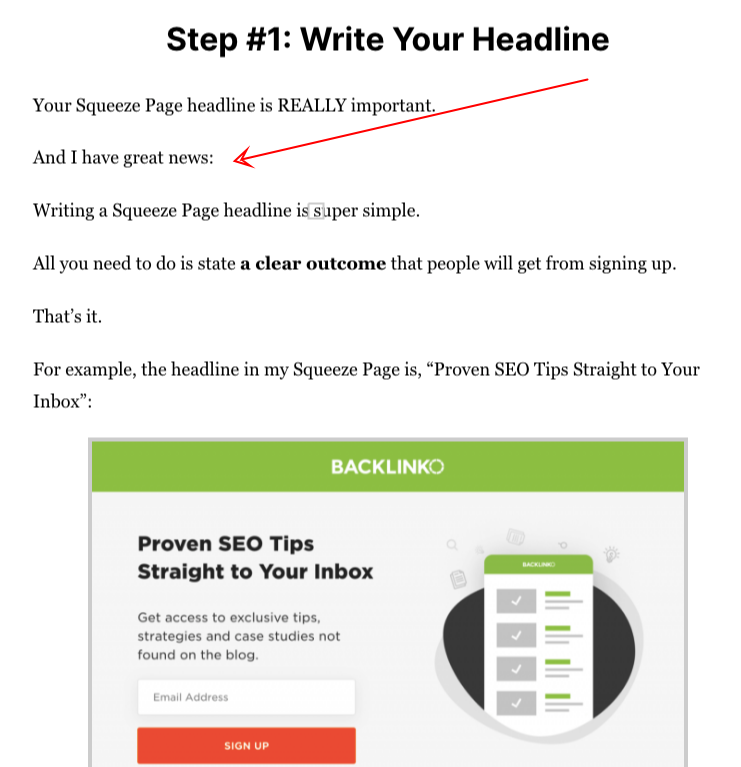

Grease-slide copy is a copywriting technique used to keep your readers glued to your page. So using phrases like:
- But wait — there's more.
- Yes, you read that right…
- We're not through yet.
Of course, not all of these grease-slide lines will work for your pitch. You have to check which ones are applicable to your outreach context. But if you can add these simple words to guest post pitch or any type of outreach campaigns, you can improve your outreach's response and conversion rates.
Make Your Infographic Outreach Pitches Irresistible
There are many outreach advice and email templates out there, but the one that would be effective to you is to write an outreach email from scratch based on your brand's messaging, context, and value proposition of your pitch.
Always improve your outreach copy based on the feedback of your prospects and the added value of your visual content piece. Make it irresistible.
What To Consider When Using Branded Email Addresses For Client Outreach?
The difference between a great outreach campaign and a mediocre one boils to minor details outreach people don't want to discuss. This involves choosing the right email address to use for outreach.
One of the first things your target recipients will see from your pitch is your subject line and your email address.
Choosing an appropriate email address plays a big part in how your response rate and link placement rates will turn out.
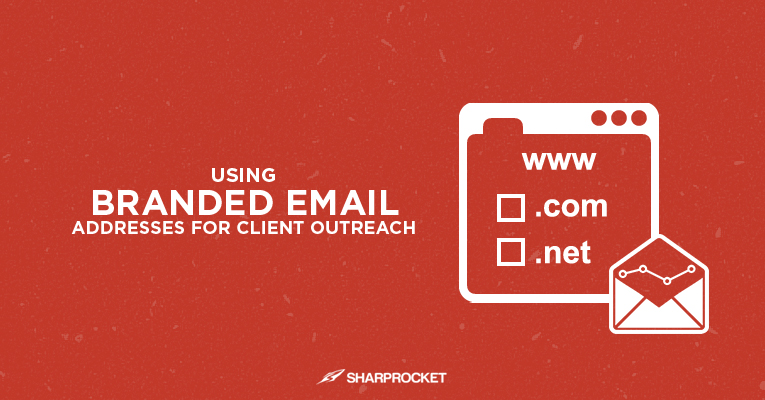

In this post, I'll dive into just one specific type of outreach email address — that is, branded email address and some alternatives if this type of email address is not available to use.
Table of Contents
What To Consider When Using Branded Email Addresses For Client Outreach?
There are many variables when using branded email addresses that should be taken well into consideration.
1. Brand Recall
Brand recall means how strong your brand name is in your space. If a person mentions your brand, does it ring a bell to their ears?
Imagine receiving an email from AirBnb.
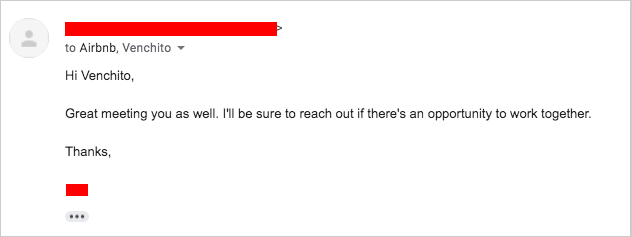

Would you hesitate to open the email? I guess not.
If people in your industry love your brand, using your branded email address should be of the highest consideration. It'll probably help to improve your open rates and/or responses.
In cases, you have clients with strong brand impressions online, use it as a leverage to penetrate link markets that may require authority or association of a strong brand.
There are editorial links from guest blogs and publishers that you can't simply replicate without a proper outreach plan. An outreach campaign with the use of a corporate email address of the client helps build initial trust — others won't.
2. Existing Relationships
Another consideration for branded email addresses is the advantage of building stronger relationships with niche publishers, journalists, and other content creators.
For long-term viability, if you use a branded email address, you incorporate all email connections in just one client.
Imagine if you have 5 email addresses that you use for one specific outreach campaign, that may be good for A/B testing, but you know that it will be a hassle to see emails and reply to individual messages.
Recently, I got a pitch from Sujan Patel, a SaaS marketer, and founder of MailShake and Ramp Ventures.


He and his team wrote a guest post on how your content strategy can support your sales team.
Before the actual content being written, it's interesting that what made me open the outreach pitch is the brand recall of Sujan Patel. He is widely known in the digital marketing realm, giving mentorship to some of the best SEOs like Ross Hudgens.
In addition, the relationship I've built with Sujan Patel from the back and forth email conversations and sharing each other's blog posts makes it easy for me not to think twice about opening his emails.
Using a branded email address has the advantage of increasing open and response emails from the initial outreach even up to sending them follow-up emails.
Your client's brand has connections with business partners and online publishers that have to be maximized fullest in terms of content promotion and link building.
3. Coordination with Legal and PR Teams
Large enterprise teams have their legal and PR teams in place.


One consideration when choosing a branded email address is your outreach team's awareness and coordination with legal and PR teams.
There have been many backfires to digital and SEO agencies because they weren't aware of certain protocols following usage rights — including the use of corporate email addresses.
Make your PR teams aware of your outreach process end-to-end. So if things go awry, you won't be in a total mess.
Alternatives To Branded Email Addresses (When It Is Not Available)
There are times when branded email addresses are not available to use. Either the client is strict in not giving away branded email addresses for corporate reasons or there's no chance to get in touch with the IT department to get at least one corporate email address.
In that case, what do you do as an outreach person?
In case a client doesn’t want to provide branded email addresses, you may opt to either your agency's email address or to an outreach email persona.
There are, of course, advantages and disadvantages of using either an agency email address or outreach persona.
For the agency's email address, one of the pros is the connections that have been attached to the account for months and years of doing outreach. By having that as an arsenal for outreach, it can give your outreach team an edge over other people pitching the same link prospects.
There is also a disadvantage for SEO agencies using their corporate email address, particularly to brands with "SEO" and "links" attached to brand names.
There are publishers and bloggers who itch when they see the words, "SEO" and "links", it's as if they are thinking they've been pitched for the sole purpose of links — without providing any value to them.
These are things you've got to keep in mind when choosing alternatives to branded email addresses.
Further Reading Resources:
- How to Find Any Email Address: Seeking Email Superheroes
- Six Small Differences You Can Make to Your Email Outreach
- How to Send a Follow-Up Email After No Response
- How to Use VoilaNorbert For Linker Outreach
Consider Details of Effectiveness in Outreach
While there are many facets to consider in an outreach campaign, you go over and consider even the tiny details of outreach.
As I've discussed, not knowing the repercussions of choosing a branded email address may give you a blow in your future outreach results. So better start thinking of plans to make it work best for you.
Are you considering using branded email addresses for your client's outreach campaigns? Share any other tips or considerations in the comments below:
Best Practices In Content Sharing To Increase Brand Awareness
Content sharing helps increase brand awareness of your website. When people share your content, you gain exposure for every web asset that's amplified.
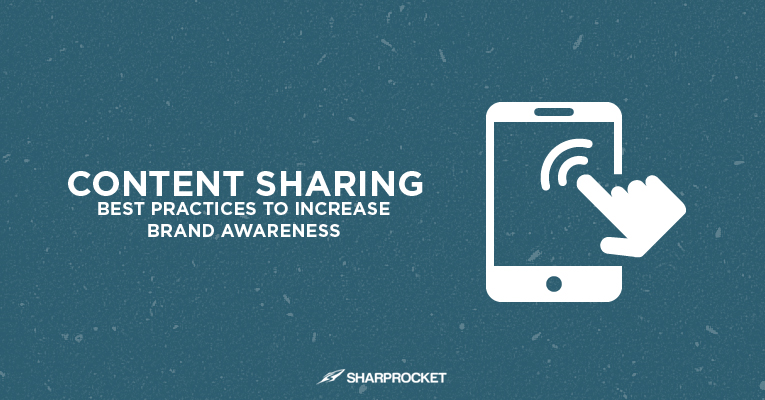

As part of a content promotion process of any brand, content sharing involves the use of social media platforms and other websites with significant engagement to circulate links of pages and content itself relevant to the audience.
One leverage to maximize content sharing on your content is to understand how people are being influenced, particularly persuaded to take any action that you desire.
Table of Contents
Psychology of Persuasion Applied to Content Sharing
Influence matters to get people to share content. But how do you build or get one for your brand?
In the book "Influence: The Psychology of Influence" written by Robert B. Cialdini, he covers six universal principles to influence anyone better. These principles can help content marketers to make action plans on how they can get their target users to share their relevant content online.
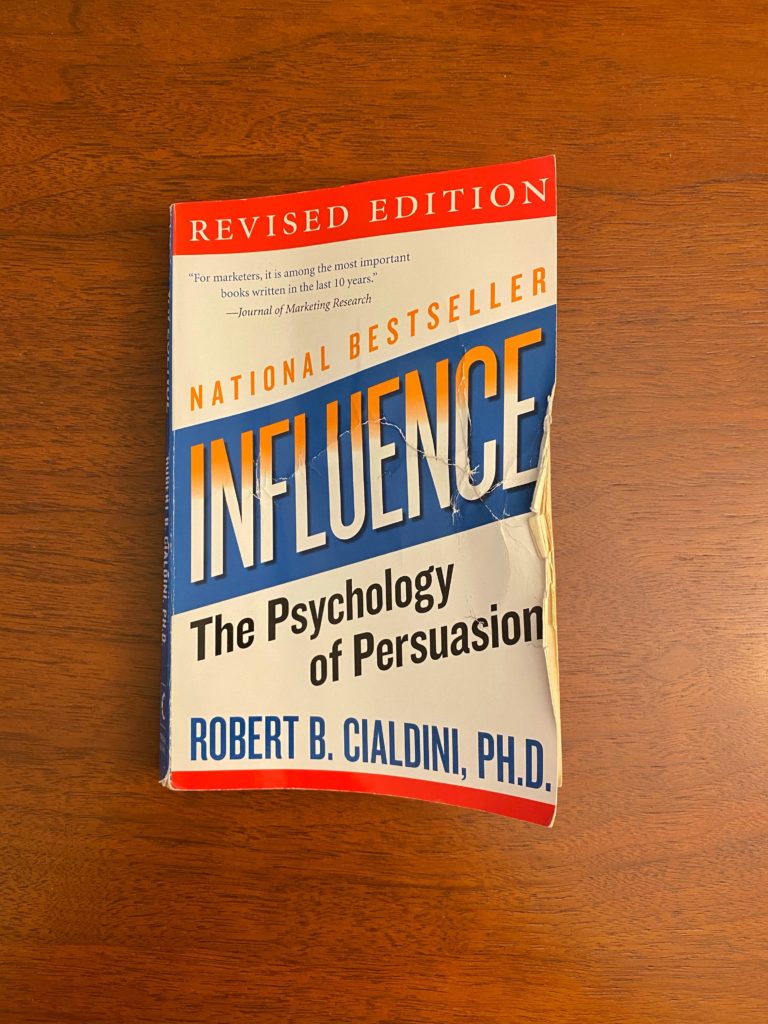

Let's start with the principle of reciprocity. It says, "If I do something for you, then you can or must do what I ask of you." By showing initiatives that bring value to your audience, your action can be reciprocated through a social share of your content piece.
The second principle that speaks of "I can't have it, I want it" — scarcity. If there are only a few people who get access to your content, it becomes more valuable than if it's available to consume by everyone.
"Liking" tells people, "If you like me then you are more likely to do what I ask of you." It speaks of pre-conditions that make you likable in the first place — which helps you get the attention you deserve. There is a higher likelihood when you ask people to look at your page and to share it with their social profiles when the brand or personality who asked of those desired actions is likable.
When you have built content authority, there is an immediate advantage to get the following - leading more eyeballs to your content. Social sharing is easier this time.
Another principle of influence is social proof - which refers to any people's recommendations to a certain thing. If a person you know shares a content piece and/or he or she recommends you to take a look at the article, you're likely to read it.
The last influence principle of persuasion plays a significant role in how your content can be shared online is commitment or consistency. A consistent brand voice, style, and messaging in content, for example, helps create brand recall to your web assets. This helps further better social sharing from followers and brand advocates.
So those are six principles that you can leverage for effective content sharing.
Now let's discuss some actionable tips that you can immediately implement right now.
Best Basic Practices in Content Sharing
1. Build your social media follower base.
Most content marketers would go out, connect with other like-minded people, and start sharing links of their pages. While that itself makes continuous content sharing possible, it is good to begin also building your social media base.
That means putting enough effort to add more followers to your social media profiles — these followers may include content creators whom you can absorb additional advocates from.
Here are some tips for building your social media base.
Create your social media profiles. Start with this activity first. Invest in appealing visual designs for your profile photos. This will help establish your social media brand. You can check out these articles for the basic setup of social media profiles — RavenTool's Social Media Setup Checklist and Improve Your Social Media Profiles In Less Than An Hour by HootSuite.
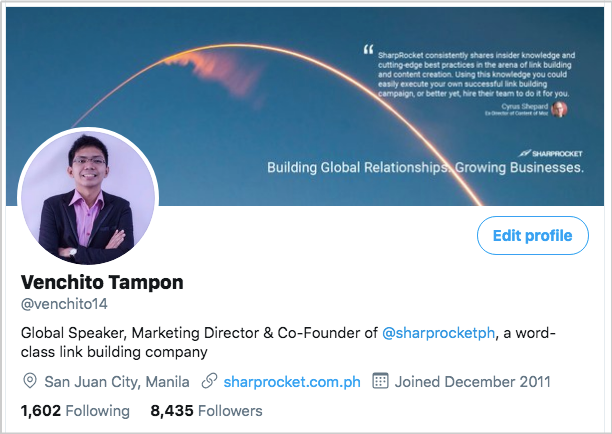

Start asking your existing offline followers/fan base, contacts, and networks of people to follow your personal/corporate social profiles.
By this time, you also need to understand your context of messaging. It begins by knowing your audience well — the channel or platform they mostly engage in, language or style they use, even their level or type as an audience.
Start sharing content pieces you produce on your blog, as well as other relevant articles that you find useful to your target customers. This gives a variety to your content sharing, besides just promoting your content.
2. Add social sharing capabilities to your content.
To continuously get social shares, your content must be shareable.
It's pretty basic, but I've seen articles that don't have any social sharing buttons to share links. And even if they have social shareability, the odds are it includes too many networks — which their audience doesn’t usually use for content sharing.
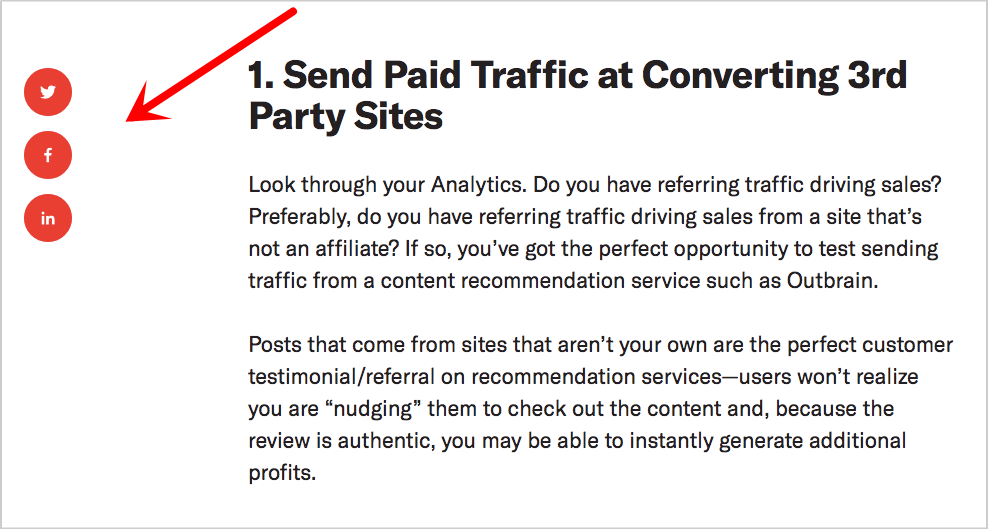

You may also add tweetability (I just made up this term) of your content by looking for quotes or statements impressive for sharing. You can install the Click to Tweet plugin and set up statements for Twitter sharing.
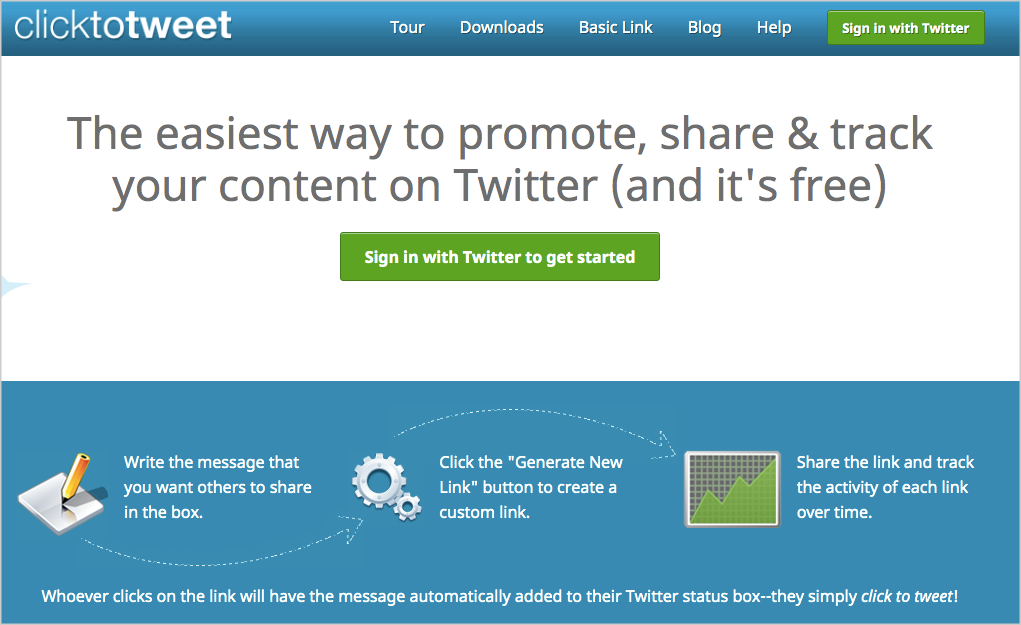

In addition, make sure you link to social profiles of names you mentioned in your post. That means, simply linking to their Twitter profiles if they have one. It's an excellent way to catch people monitoring mentions of their profile links and more likely even to share your content with their networks.
3. Get more citations from external content assets
As important as building your social follower base — investing resources to enlarge your following and promoting your content, you also want to look things externally.
For example, you can link to your relevant articles on your blog from your external content assets (e.g., guest posts). This will help increase the visibility of your content, as people could go through links and check your content.
4. Connect with influencers for content collaboration.
Influencer marketing is a buzzword these days. Every content marketer wants to engage in that initiative.
Take a look at the phrase's search trend, for example.
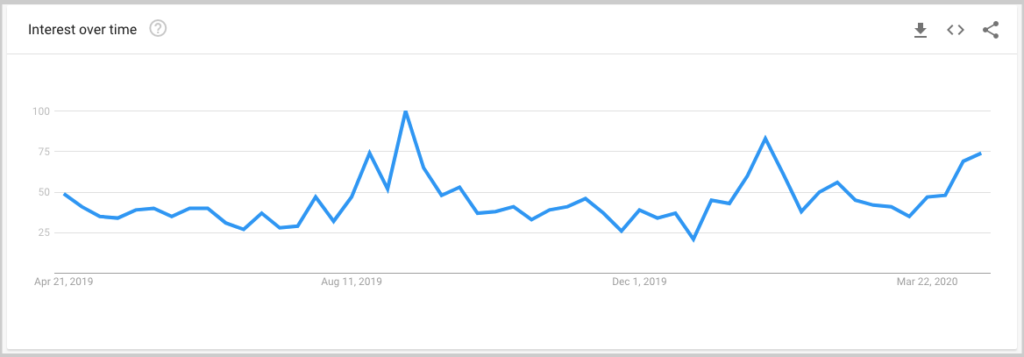

But how can one take advantage of influencer marketing?
In my guide on influencer outreach, I covered a lot more detail on how we can maximize the use of influencer marketing as part of content marketing campaigns.
It offers great opportunities for anyone - brand and independent personalities to get more following. In our subject, today, establishing a constant series of action plans for content sharing.
You can start by reaching out to influencers to get inputs on topics of their expertise. By having an interview series in mind, you'll be able to craft content that's meaningful to use for your audience.
I started my blog in 2013 by producing a series of interviews with digital marketing experts. I initially looked for local search marketing experts as I've had a few built relationships back then — making it easier to ask them to answer some of my questions.
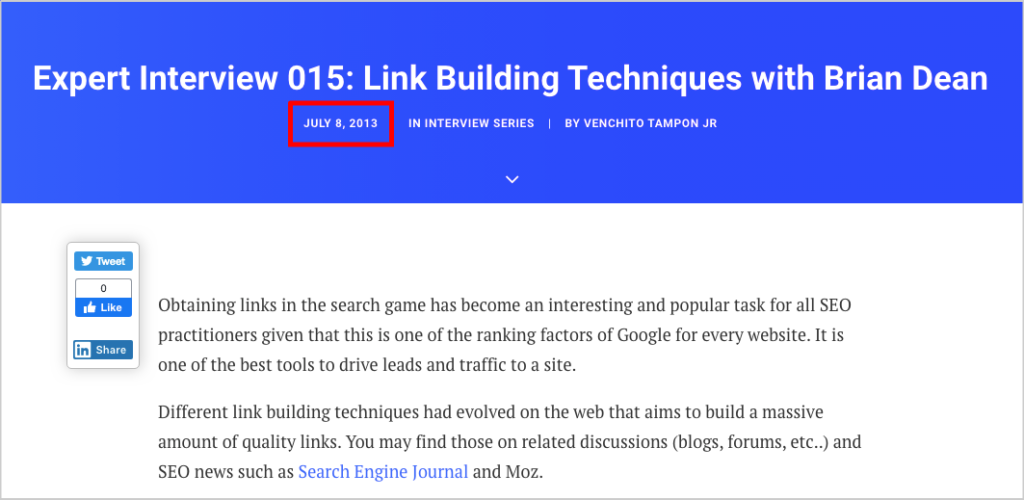

As you are growing your brand, you may also start collaborating with influencers for a piece of content. It's likely to give a boost in content sharing, as both social accounts are used to promote and amplify the content asset.
For further readings on influencer marketing, You can check out this guide on becoming an influencer by Jason Acidre, and this last year's presentation by Rand Fishkin on building influence (an evergreen resource).
5. Associate yourself with larger publications.
From a branding and SEO perspective, you can get more exposure through associating your site with more prominent names in your industry.
That is doable by becoming a regular contributor to larger publications in your space. Because they have a lot of traffic and are targeting the same audience as you're targeting, they can pass through additional followers that will help grow more of your social following base.
In essence, you're collecting and grabbing opportunities from people and entities your brand is partnering with.
Further Resources:
Content Sharing Made Simpler
With different platforms to engage your audience today, social sharing of your content becomes more feasible. Start looking for ways to establish your social media following based, grow it to enhance brand awareness, and deliver more value to your audience using your content.
How Many Websites Your Link Prospector Should Be Looking For?
You've identified your link building strategy, you've designated roles for your campaign, and now, your first step is to look for link opportunities relevant to your site.
But how many link targets do you need to look for every week?
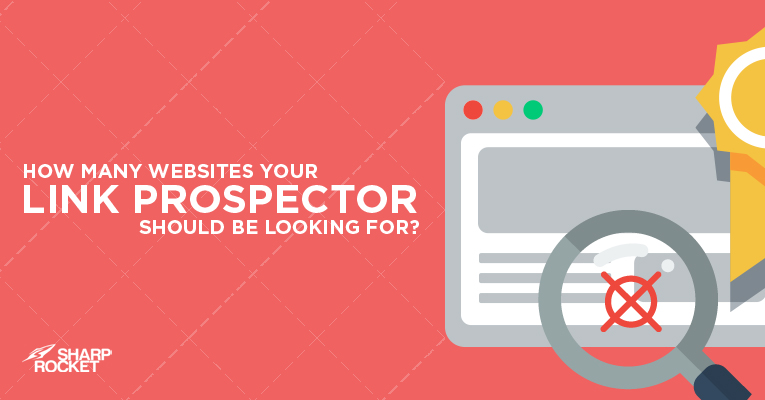

This is a recent question from a community user of Traffic Think Tank:
"What is the maximum number of link opportunities that your link prospectors find? Mine are assigned 300-400 per week. I often wonder whether that's a high number or a low number. It often takes about 6 weeks before new link prospectors hit that, so I feel it might be high. But would like to know how many all of your link prospectors find on average?
The basic answer to this question is: it depends.
Before you close this page, let me explain.
Your link prospecting starts even before you actually jump onto your Google search and type in industry keywords to find blogs or sites.
You plan the link prospecting campaign based on different factors. The rate of your link discovery depends on your own concluded decision specific to your client's or your website's needs.
These are the factors that will help you estimate the number of link prospects you have to discover every week:
- Historical data (average or estimate link placement rate of your past link building campaigns)
- Industry links per content on average (based on links on average per similar content assets in your industry)
- Metrics stated on agreement (for agency alike)
Since these factors may require some thinking, I'll dig into each of the factors here.
Let's start.
Table of Contents
HISTORICAL LINK DATA ON SIMILAR STRATEGY
If you've done link building campaigns in the past, you may have a data to look at and see how many links you generated from a number of link opportunities.
Remember that the data you will combine from two or three campaigns should correspond to the type of link building strategy you use.
For example, you can't combine historical data of link placement rate (manual links acquired over link prospects) of a broken link building campaign from data gathered in a guest blogging campaign.
These two campaigns are different in their approach and have their own sets of factors to consider.
BACKTRACK YOUR LINK PLACEMENT RATE
If you have two or more link acquisition campaigns — for example, infographic outreach, you can check the average link placement rate by dividing the number of links you acquired over the link opportunities you discover.
In your next campaign, you'll now set a target based on the average link placement rate. Let's say you've got 4.6% based on your historical data.
If your goal is to reach at least 15 links per content asset for the site you're working on, a good number of link prospects' goal should be 326 websites.
Realistically, 450 to 500 websites or pages should be on your list, considering the fact that there are bounced emails, broken pages (404 pages) at the timing of your pitch, and so many other factors. So having an allowance of additional 100 to 150 is highly recommended.
WHAT IF IT'S YOUR FIRST TIME TO EXECUTE THE LINK STRATEGY?
If you're doing it for the first time, here is a good outreach placement rate: 5% to 7% range.
Siegemedia has this 5 to 7% outreach placement rate, to say the least.
Considering that the content you deliver to prospects is linkable, you are nailing it if the campaign reaches 5% of the total link prospects gathered to be actual links.
For broken link building, it may vary a little bit. In our experience at SharpRocket, 2 to 5% link placement rate is a good benchmark.
From that, you reverse engineer the number of linking websites you should be searching for.
TYPE OF CONTENT
The form of content you are pitching to matters in how many link opportunities you should be aiming for your content - which again, will depend on the root - outreach placement rate.
If you're pitching a high-end story, very localized in targeting, you may be getting a mid-to-high conversion rate, as it is very specific and could be exclusively covered by publishers.
Meanwhile, resource guides will require 300 to 500 links pages to expect at least a minimum of 10 resource links for a given linkable asset (for 2 to 5% link placement rate).
So, when knowing how many link opportunities you should be searching for in a given week, whether you are a solo link builder or an agency, you need to consider how linkable the content asset is and if's the type of content that gets the highest link reception.
INDUSTRY/VERTICAL LINK ENVIRONMENT
Every vertical has different link landscape.
For example, lawyers don't tend to link out compared to mommy bloggers. That's not to say that lawyers can't give you a link. If it's highly local in nature and your content is highly linkable, you'll get a chance to acquire links for sure.
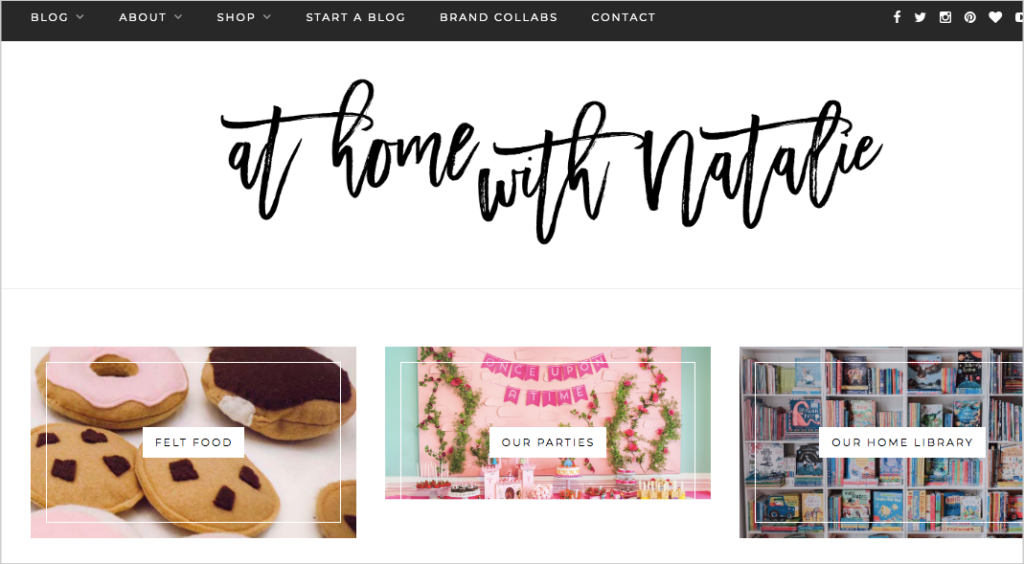

There are industries that don't use blogging as their main platform to earn money besides their profession.
But for mommy and fashion bloggers, they get some affiliate commissions and earnings from advertisements of different kinds online. Thus, they get more free time to engage in any online marketing activities including SEO and link building.
Consider this fact as you decide on the number of link opportunities for a given niche client.
TIME SPENT ON PERSONALIZATION
The higher the number of link targets you can discover, the more time you'll have to spend in personalizing outreach emails.
This is a must to consider as you don't want to sacrifice quality of pitches just because you're looking for a higher number of link opportunities per week/month.
After all, the outcome is more important than the link opportunities rate.
If you are pursuing a larger size of link opportunities, you need to consider the time spent on personalizing your email pitches. Remember without proper personalization, you'll just lose the prospects, either they won't respond to your pitch (ignoring your emails overall) or delete them immediately as soon as it arrives.
METRICS
Lastly, setting a benchmark for link prospecting should be considered in assessing how many link prospects you should look for in a given week.
The higher the benchmark is for metrics, let's say DA50 and above for all link targets, the less websites or pages you may be including in your link list.
That's not to say that benchmark isn't good; it's for assessing quality as a baseline.
Nonetheless you have to consider your metrics if you want to cast a wider net in link prospecting.
FURTHER READING:
- Tactical Guide to Never Running Out of Link Prospects
- How to Get 3000 Link Prospects in 5 Minutes Using Citation Labs' Link Prospector
- How to Use Competitor Links in Blog Prospecting
- 4 Advanced Link Prospecting Techniques For Increased Efficiency
VARIATIONS ON LINK PROSPECTING NUMBERS
While there are many factors to consider in checking the average number of link opportunities your prospectors must look for either in a week or in a month: historical link data from past campaigns, type of content, industry, time spent on personalization and metrics, make sure to increase allowances in numbers.
By increasing more of the link prospects allowed, you increase the likelihood of getting more links for a given campaign.




